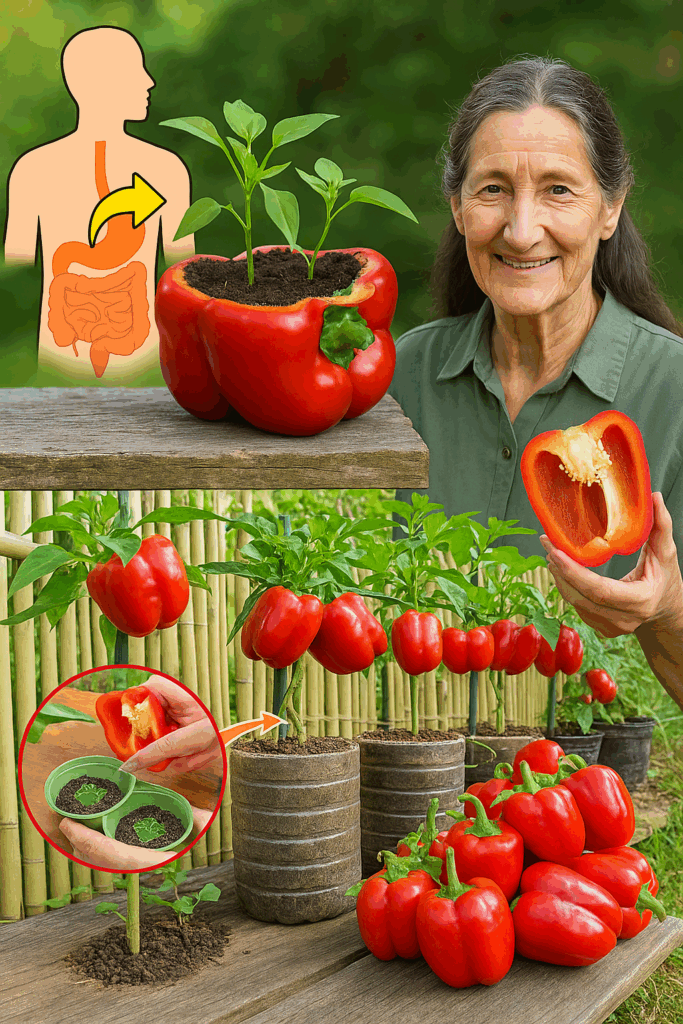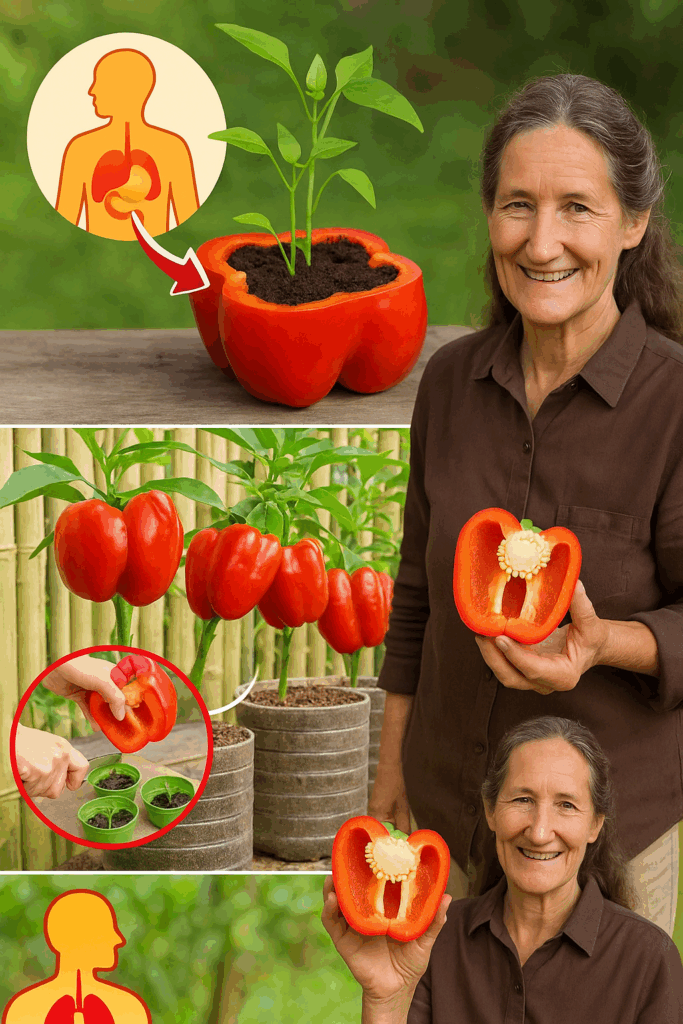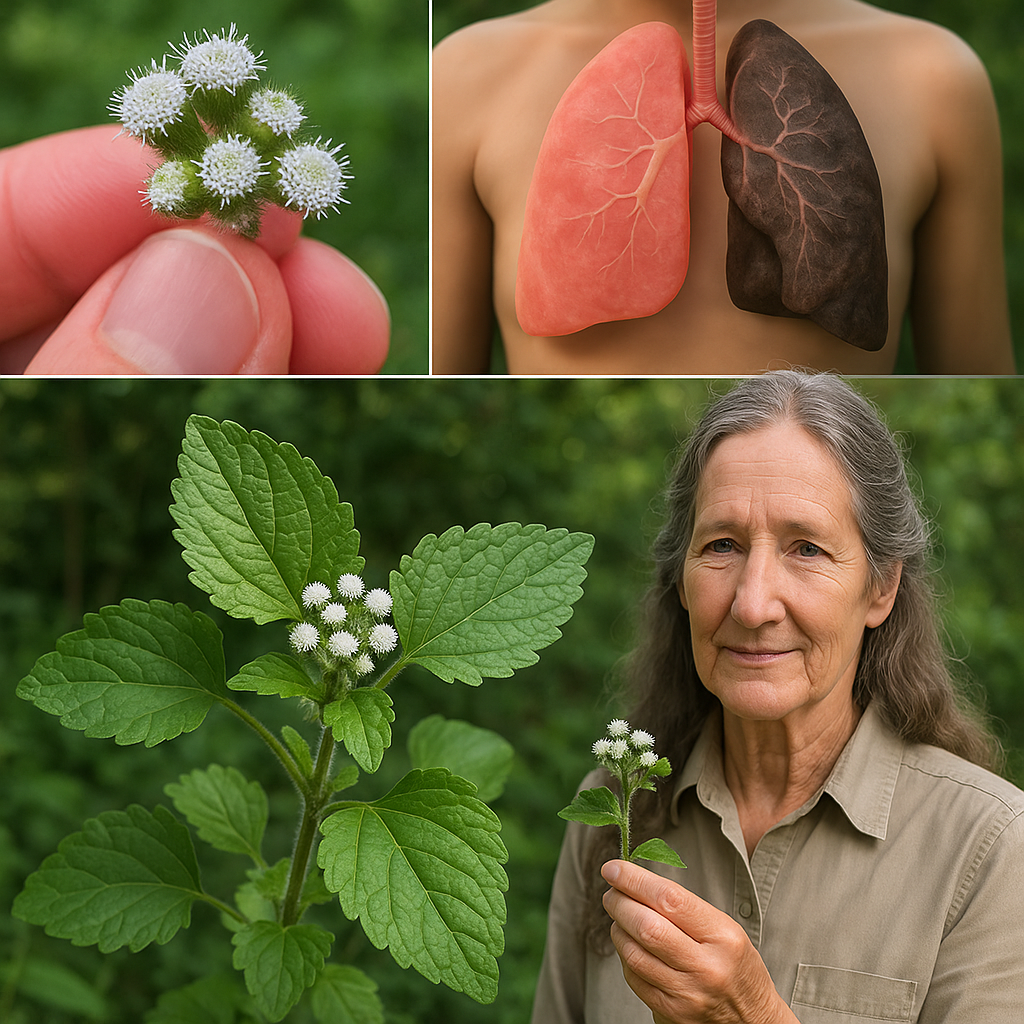Peppers are among the easiest and most rewarding vegetables you can grow at home. Whether you love sweet bell peppers or tongue-tingling hot chilis, success comes down to a few essential steps—and a little insider know-how. Here’s how to maximize your pepper harvest and enjoy thriving, fruitful plants all season long.

🌶️ 1. Choose the Right Pepper Variety
Start by selecting a pepper type that matches your taste and climate:
- Bell peppers – Sweet, crunchy, and colorful (green, red, yellow, orange).
- Jalapeños – Moderate heat; perfect for salsas and poppers.
- Habaneros – Extremely hot; use sparingly!
- Poblanos – Mild and ideal for roasting or stuffing.
- Banana peppers – Mild, tangy; great pickled or fresh in salads.
🔍 Pro tip: Look for compact or “container” varieties if you’re short on space or using patio pots.
☀️ 2. Give Them Plenty of Sun
Peppers are sun-lovers. Make sure they get 6–8 hours of direct sunlight daily. If you’re growing indoors or in a shady spot, supplement with grow lights to keep them productive.
🌱 3. Use Loose, Rich Soil
Peppers hate soggy roots. Prepare well-draining soil enriched with compost or aged manure. Ideal pH is 6.0–7.0, slightly acidic to neutral.
🔍 Pro tip: Raised beds or containers with drainage holes are ideal if your garden soil is too heavy.
🏡 4. Start Indoors for a Head Start
Begin seeds indoors 8–10 weeks before your last frost:
- Sow ¼ inch deep in seed-starting mix.
- Keep soil moist and warm (70–85°F/21–29°C).
- Transplant to larger pots once they develop 2–3 true leaves.
Let them harden off gradually before planting outside.
🌿 5. Transplant with Care
Plant seedlings outdoors when night temperatures stay above 60°F (15°C). Space them 18–24 inches apart and water well at planting.
🧠 Quick tip: Bury the stem slightly deeper than in the seedling pot to encourage stronger root growth.
💧 6. Water Consistently, Not Excessively
- Keep soil evenly moist, but never soggy.
- Mulch around the base to retain moisture and suppress weeds.
Water deeply at the base 1–2 times per week, depending on weather.
🌾 7. Feed Wisely
Feed every 3–4 weeks with a balanced fertilizer (like 5-10-10) or a tomato/vegetable-specific formula.
- Too much nitrogen = lots of leaves, few peppers.
- Look for phosphorus to support blossoms and fruit.

✂️ 8. Prune for Bigger Yields
Pinch off:
- Early flowers until plants are 12–18 inches tall to encourage more growth.
- Suckers (small shoots near the base) to focus energy upward.
Stake or cage tall varieties to prevent breakage from fruit weight.
🐛 9. Control Pests & Diseases
Keep an eye out for:
- Aphids, spider mites, cutworms – treat with neem oil or insecticidal soap.
- Fungal diseases – avoid wet leaves, space plants well, and water early in the day.
🍽️ 10. Harvest at the Right Time
Harvest peppers when they reach your preferred size and color:
- Green bell peppers are less sweet, more crisp.
- Allow to ripen fully for red, orange, or yellow.
- Hot peppers can be picked green or left longer for deeper color and heat.
Always use scissors or pruning shears—don’t pull by hand!
🏆 Bonus Tips for Abundant Yields
✅ Add Epsom salt (magnesium sulfate) around plants once a month to boost growth and flowering.
✅ Use companion plants like basil and marigolds to deter pests and attract pollinators.
✅ Regularly harvest ripe peppers to encourage more flowering and fruit production.
🌶️ Ready to Grow a Rainbow of Peppers?
With the right mix of sun, soil, water, and care, your pepper plants will reward you with lush growth and vibrant fruit. Homegrown peppers are more flavorful, more nutritious, and give you the freedom to explore exotic varieties. Whether you’re growing in containers on a balcony or in garden beds, the secret to abundant production is consistency, care, and timing.
Would you like a printable month-by-month pepper growing calendar or a list of heat-tolerant pepper varieties for hot climates? Let me know!


